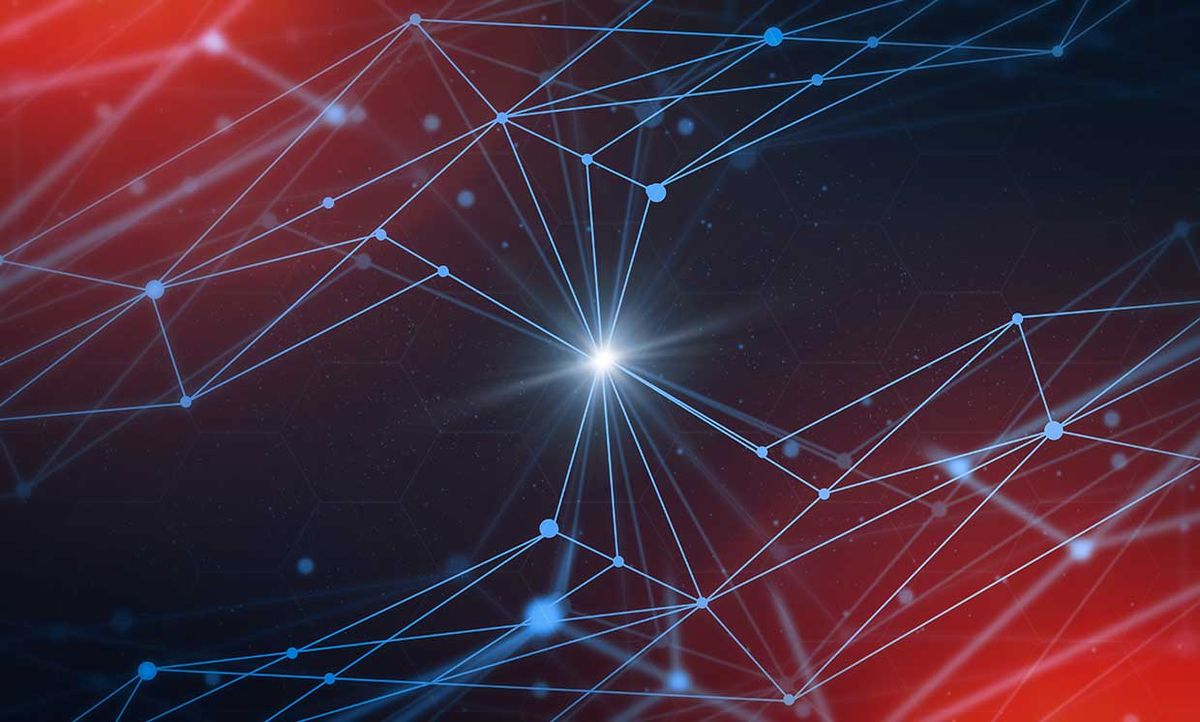An array of cesium atoms just 2.5 centimeters long has demonstrated a record level of storage-and-retrieval efficiency for quantum memory. It’s a pivotal step on the road to eventually building large-scale quantum communication networks spanning entire continents.
A quantum internet could connect far-flung communication nodes through entanglement—a phenomenon that enables quantum-mechanically connected particles to experience related changes to their respective energy states regardless of the distance between them. But the time it takes for these systems to distribute their entanglement depends, naturally, on their efficiency at storing and retrieving entanglement.
“We learned in this work [how] to achieve this 85-90 percent [efficiency] benchmark,” says Julien Laurat, a professor and leader of the quantum networks team at the Kastler Brossel Laboratory at Sorbonne University in France. “This is the best in any physical platform.”
Previous work only achieved at most 25 percent efficiency, as Laurat and his colleagues describe in a paper published in a recent issue of the journalOptica. Their demonstration is part of a broader effort by the Quantum Internet Alliance—a coalition of university research groups from eight European countries—to develop technologies for a European network that supports quantum communication and distributed quantum computing.
Boosting storage-and-retrieval efficiency from 25 percent to 90 percent makes a big difference in the speed and size of the quantum network such memory devices could support. For instance, Laurat and colleagues note, increasing efficiency from 60 percent to 90 percent would accelerate quantum memory speeds by two orders of magnitude over a distance of 600 km.
That said, much work remains before quantum networks can get to be hundreds of kilometers across.
The experiment involved two quantum memory devices based on ensembles of laser-cooled cesium atoms. Researchers demonstrated how cesium atoms can store and retrieve single-photon entanglement from entangled light beams. Entangled photons could connect the various quantum nodes in a future quantum internet.
“In future large-scale quantum networks, multiple such entangled links will need to be generated at the same time in order to be able to later connect them into an end-to-end long-distance link,” says Filip Rozpedek, a postdoctoral associate researching quantum communication at the University of Chicago, who was not involved in the study. “Storage in quantum memories is needed in order to be able to maintain a given link while waiting for successful generation of the other ones.”
This “quantum repeater” protocol of connecting smaller segments into a larger quantum network would not be practical without reliable storage-and-retrieval efficiency. And, Rozpedek says, that efficiency “opens the possibility of experimentally investigating such practical quantum repeaters.”
The next big step, Rozpedek explains, would involve demonstrating high transfer efficiency between quantum memory devices separated by a larger distance and with longer storage time. Future success in building a quantum internet would also likely require use of a “multiplexing” technique that allows for parallel attempts to establish entangled links between the quantum nodes.
Laurat and his team already have their sights set on tackling some of those next milestones. If all goes well, they envision a pan-European quantum network becoming possible within the next five to 10 years. “The next few years should see demonstrations over a few tens of kilometers,” Laurat says.
Jeremy Hsu has been working as a science and technology journalist in New York City since 2008. He has written on subjects as diverse as supercomputing and wearable electronics for IEEE Spectrum. When he’s not trying to wrap his head around the latest quantum computing news for Spectrum, he also contributes to a variety of publications such as Scientific American, Discover, Popular Science, and others. He is a graduate of New York University’s Science, Health & Environmental Reporting Program.



